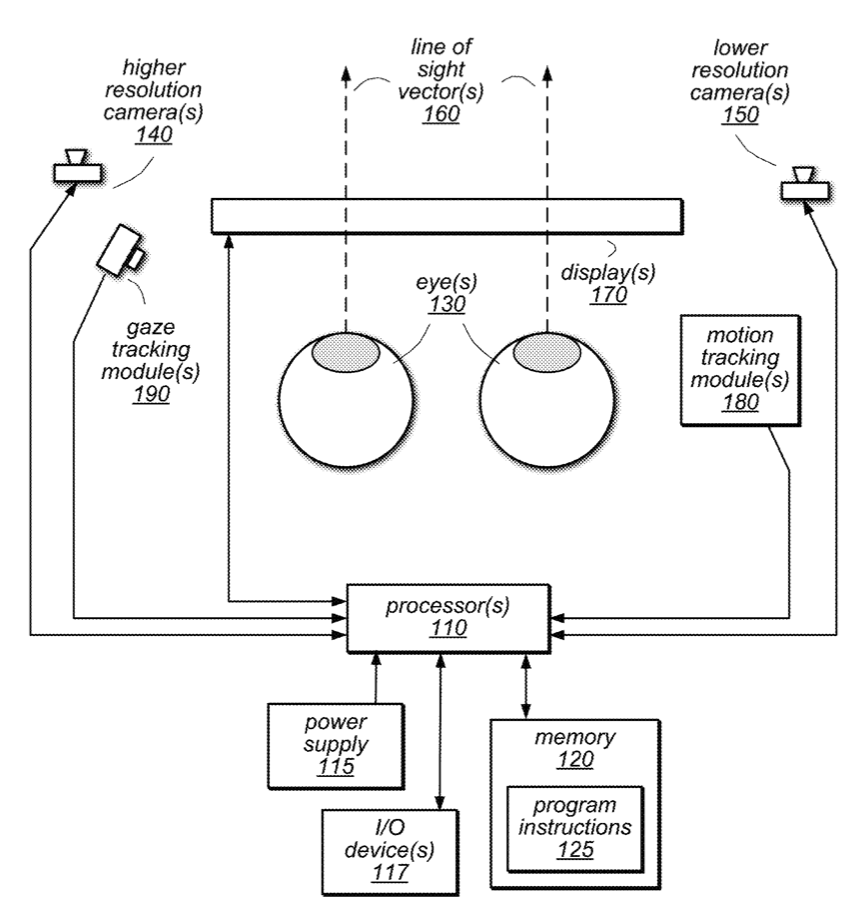Apple has been granted yet another patent (number 10,739,599) for “Apple Glasses,” its rumored augmented reality/mixed reality head-mounted display. This one is dubbed “predictive, foveated virtual reality system.”
It would capture views of the world around a user using multiple resolutions. predictive, foveated virtual reality system could include one or more cameras configured to capture lower resolution image data for a peripheral field of view while capturing higher resolution image data for a narrow field of view corresponding to a user’s line of sight.

Additionally, the system could include one or more sensors or other mechanisms, such as gaze tracking modules or accelerometers, to detect or track motion. A predictive, foveated virtual reality system could also predict, based on a user’s head and eye motion, the user’s future line of sight and could capture image data corresponding to that predicted line of sight. When the user subsequently looks in that direction the system may display the previously captured (and augmented) view.
In the patent data Apple notes that virtual reality (VR) allows users to experience and/or interact with an immersive artificial environment, such that the user feels as if they were physically in that environment. However, the tech giant says that conventional virtual reality and augmented reality systems may also suffer from latency problems potentially cause eyestrain, headaches, and/or nausea.
For example, conventional virtual reality and augmented reality systems may involve significant lag times between the time a user looks in a particular direction and the time that the system is able to display the corresponding scene to the user. Additionally, the amount of image data required to be captured, generated and/or displayed to the user of a conventional virtual reality system may be so large as to affect the performance of the system (e.g., increased latency) and to increase the cost and/or size of the system.
Apple thinks a predictive, foveated virtual reality system would solve some of these issues.
When it comes to Apple Glasses, such a device will arrive next year or 2022, depending on which rumor you believe. It will be a head-mounted display. Or may have a design like “normal” glasses. Or it may be available in both. The Apple Glasses may or may not have to be tethered to an iPhone to work. Other rumors say that Apple Glasses could have a custom-build Apple chip and a dedicated operating system dubbed “rOS” for “reality operating system.”
